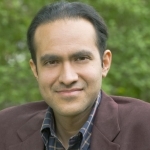 (Host)
(Host)
Commentator and UVM Professor Saleem Ali reflects on how Vermonters
that hail from the Balkans region have cause for cautious optimism about
the lands of their origins
(Ali) Vermont is home to a large
diaspora from the Balkans region, particularly from Bosnia, Croatia and
Serbia. To build on these ties, I recently lectured at the University of
Belgrade to seek opportunities for partnerships.
My last visit
to Belgrade was almost 25 years ago as a teenager on a short tourist
excursion from Pakistan. It was then the capital of ‘Yugoslavia,’ the
center of power for an experiment in synthetic nationalism commandeered
by Marshal Tito. Six diverse republics with a complex history of
tensions based on religion and ethnicity were brought together under one
banner of non-aligned socialism. In a polarized world between communism
and capitalism Yugoslavia appeared as a beacon of hope during the Cold
War. States in conflict, such as Pakistan and India found an ideological
refuge in Belgrade at the summit of Non-Aligned states.
Today,
much of the industrial might generated by Yugoslav nationalism has
declined. No longer is there the famed "Yugo" car – absorbed now by the
Italian maker Fiat – but the skill set of those who worked in Yugoslav
factories has been transferred through the universities and technical
centers that still endure. Belgrade University is abuzz with activity
and while Serbia’s most celebrated scientific son Nikola Tesla found
fame in America, the city’s airport bears his name with pride.
The
end of Yugoslavia at one level brought forth a sense of despair for
those who believed in the transcendence of ethno-nationalism. It showed
that tribalism is still rife in even industrialized and developed
societies. No doubt the Yugoslav wars undermined the development path of
the country but the fractures that formed have started to congeal,
partly because the prize of greater European unity is at stake.
A
new bridge is rising over the Sava River with a spire that my Serbian
driver pointed out was reminiscent of a towering minaret. But this
semblance to a largely bygone Islamic identity no longer troubles the
residents of the city who are instead looking towards building
figurative bridges to other faiths as well. While there are still ethnic
tensions in many parts of the country, particularly in the Southern
region, bordering Kosovo, the divisive forces that split apart the
country are largely in abeyance.
Belgrade’s transformation within
25 years from inviolable capital of a multi-ethnic federation, to a
war-torn despot’s den, to a vibrant post-conflict metropolis suggests
that we should neither underestimate urban resilience, nor the human
capacity to heal.